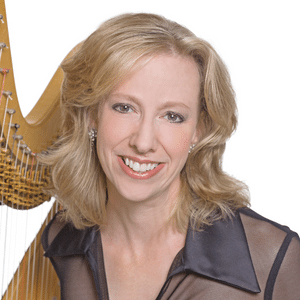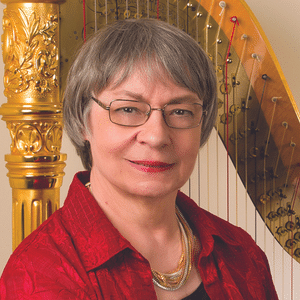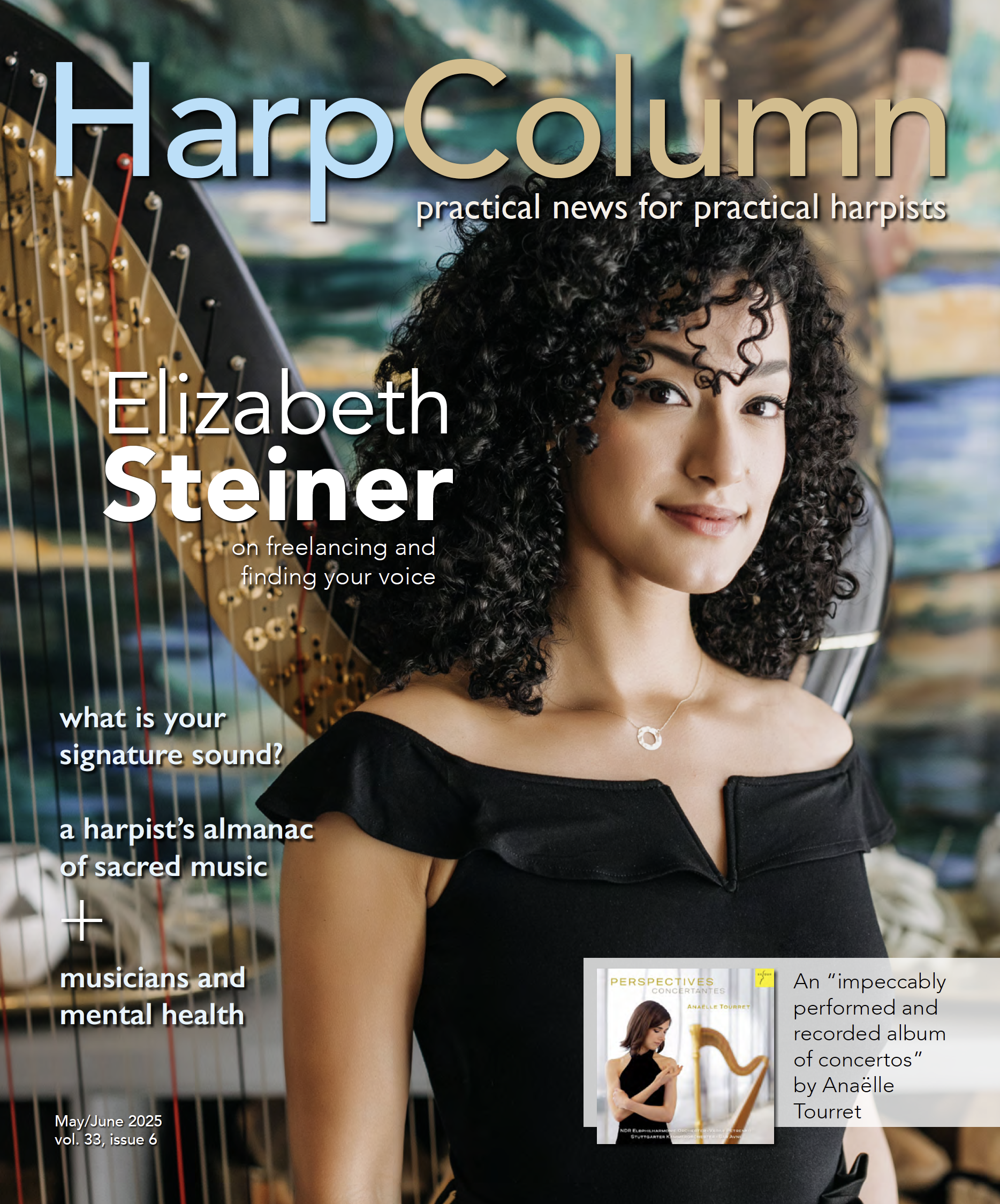
Anne Sullivan is an active performer and teacher, founder of Harp Mastery, and a member of the Board of Directors of the American Harp Society.
A warmup is a transition time that allows you to shift your focus from whatever you were doing to your harp. It helps prepare your fingers and your focus for practice or playing. It is the foundation for freedom: freedom for your fingers to move and for your musical creativity to flow. A warmup should allow you to attend to the foundational elements of technique such as physical posture, hand and arm position, and full, smooth finger motion.
The essential components of a warmup are slow, relaxed movements of your fingers performed with focus. Although your warmup could be a basic exercise, you could also use a familiar piece, a tricky passage, or an etude, as long as you are playing very slowly, staying relaxed, and focusing on gentle, correct finger motion. Five minutes is likely enough to free your fingers and bring your attention to the work ahead.
Obviously your warmup should never be so long that you don’t have time left for the rest of your practice, nor should it be your only technique work. Your warmup is merely preparing you for more challenging technical drills. If you are recovering from an injury or your body requires it, take more time and care during your warmup. And while you are warming up, don’t forget to breathe!

Carl Swanson is a harpist, teacher, technician, and harp builder who has published editions of major harp works with Carl Fischer Music.
What are you warming up to do? Is it to practice? If it is, then spend maybe five or 10 minutes warming up with scales or exercises before launching into serious practice on difficult repertoire. But if you are preparing for an important event, like a concert, recital, competition, or audition, then the answer is completely different. In that case, don’t warm up! If you know whatever you have to play well, then you need to train yourself to play with no warmup.
First thing in the morning, when you haven’t played a note since the previous day, begin immediately by playing your pieces through, without stopping, without fixing anything, from beginning to end. No matter how bad it gets, don’t stop! Little by little, each day will improve and there will be fewer mistakes. Little by little, it will feel more comfortable to play your pieces stone cold, because that is how you will have to play them in the important event. If it’s a competition, you may have to play your program after waiting backstage for more than an hour. If it is an orchestra performance, like Symphonie Fantastique, you will have to sit quietly through the first movement and then take off like a rocket in the second. So learn to play without a warmup!

Stephanie Curcio is a harp teacher, composer, arranger, publisher, and author of American Harpist.
In the early stages of learning to play, little warm-up exercises are pretty much a part of every lesson and every practice. Though students notoriously ignore these, exercises are necessary to focus on coordination and good technique while the player is mentally fresh. Repetition is essential. I recommend a minimum of five to eight times playing a warm-up selection, but this must include working toward a specific goal, such as proper hand usage and absolute accuracy.
As a player advances, I recommend isolating some technical passages in their current music and working on those as warmups. The amount of time spent then depends on how long the passages are, the goals set, and how many times they should be repeated. All this varies with age of the student, level of music, etc. I feel that a moderate amount of time devoted to warm ups is quite sufficient. Getting to the music is far more important and far more interesting. •






